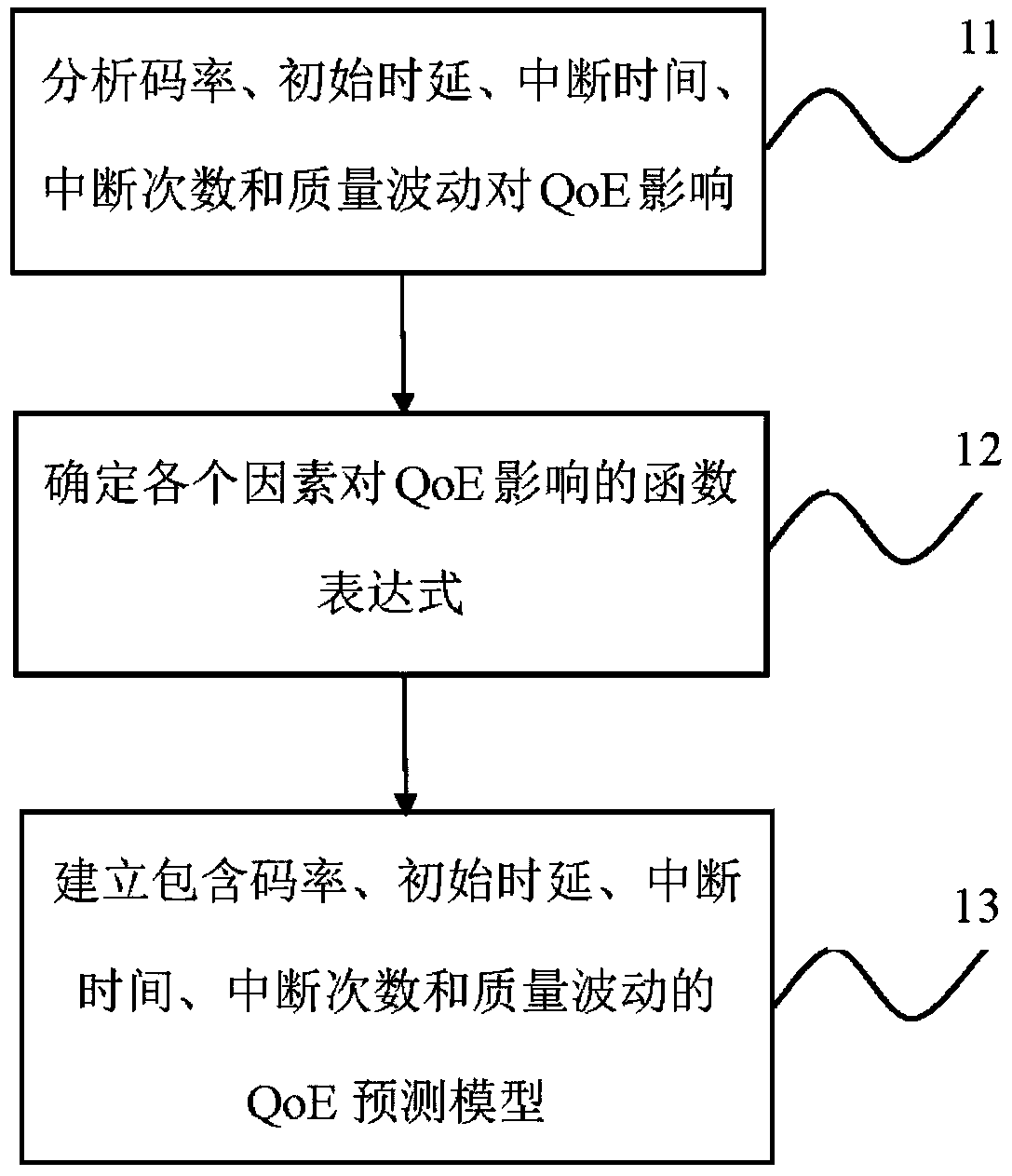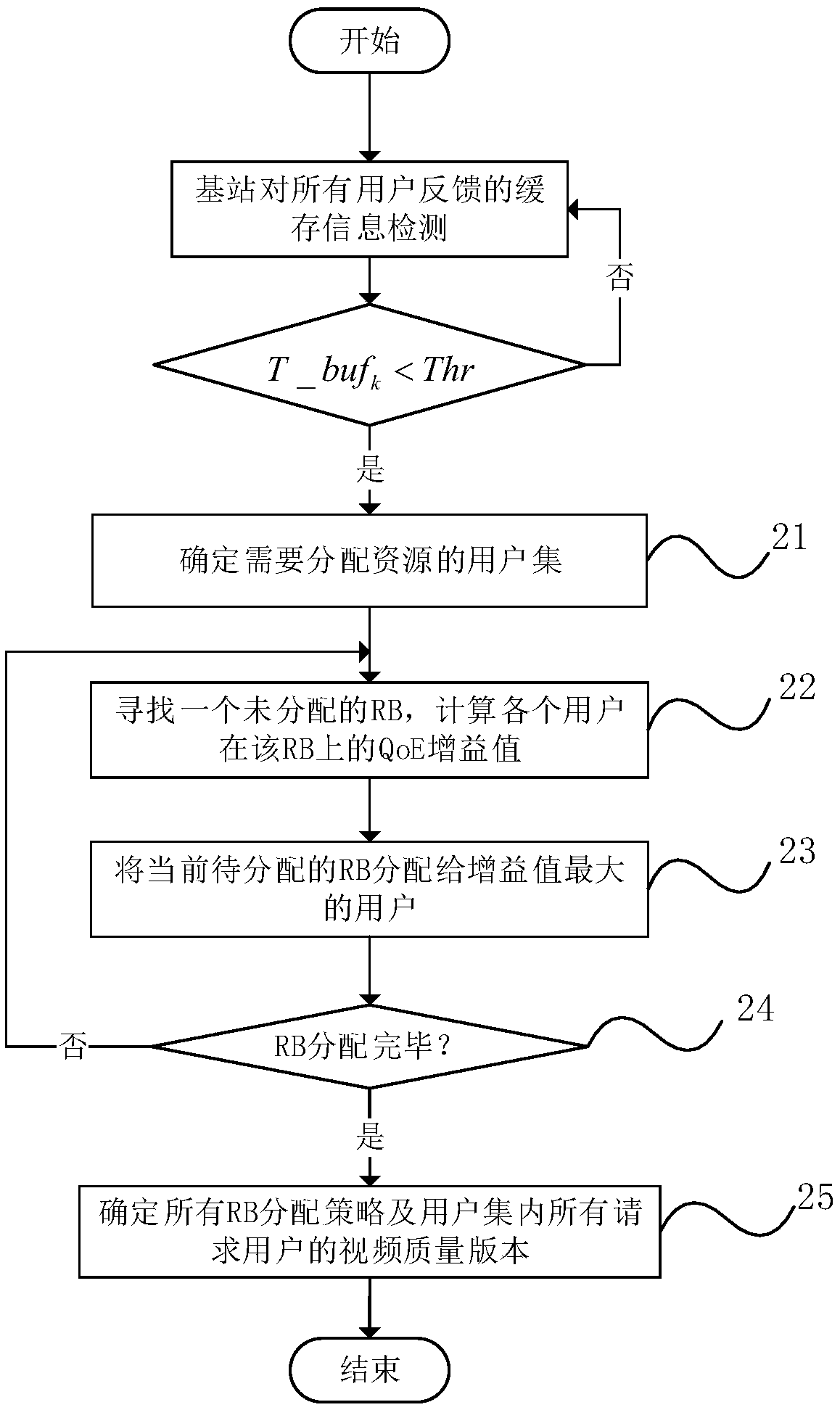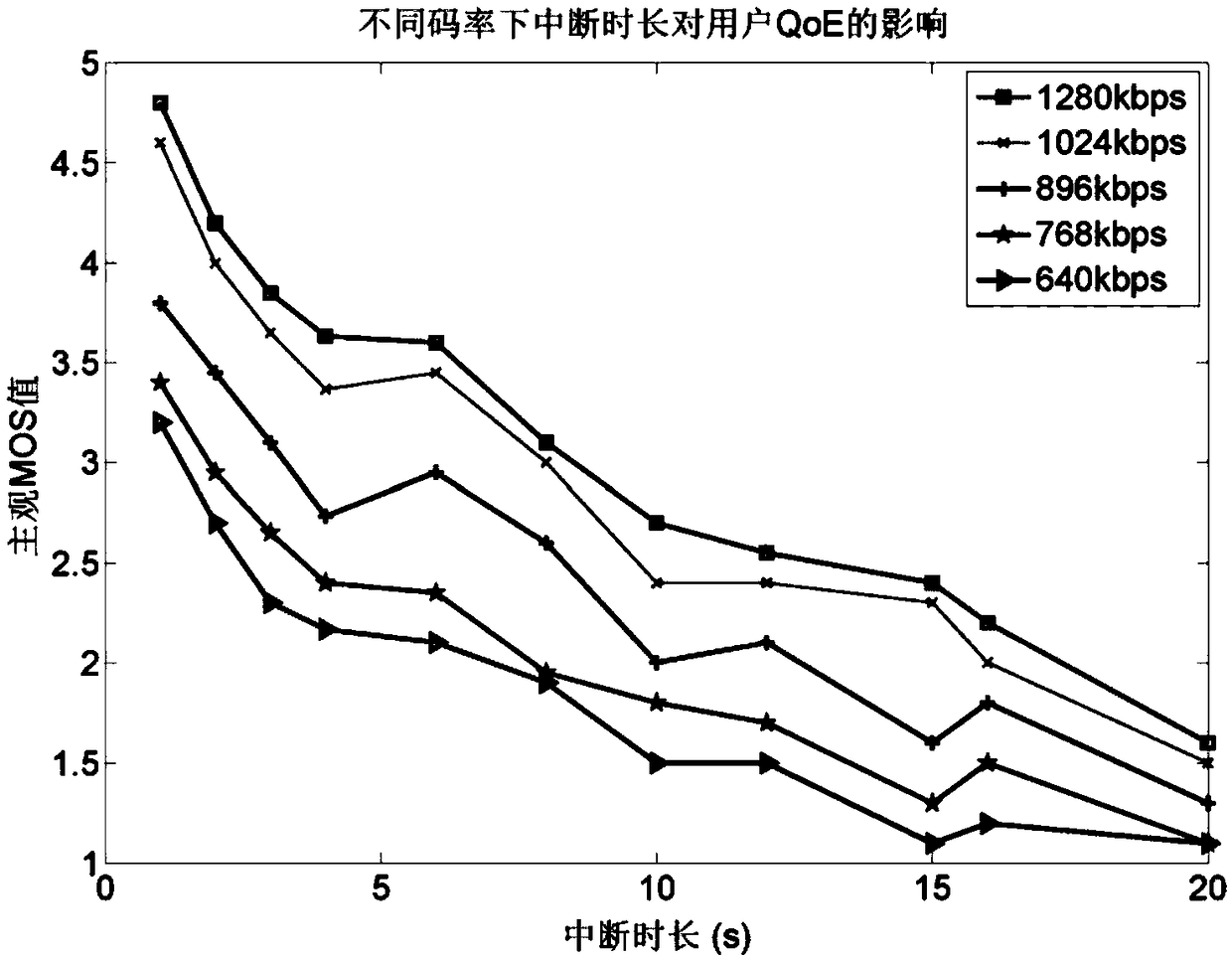QoE driven video code rate adaptive and resource allocation joint algorithm under LTE network
A resource allocation and self-adaptive technology, applied in the direction of network traffic/resource management, electrical components, wireless communication, etc., can solve problems such as impact, user transmission rate cannot accurately evaluate user subjective perception, etc.
- Summary
- Abstract
- Description
- Claims
- Application Information
AI Technical Summary
Problems solved by technology
Method used
Image
Examples
Embodiment Construction
[0067] The present invention will be further described in detail below in conjunction with the accompanying drawings and embodiments, which are explanations of the present invention rather than limitations.
[0068] A single LTE cell includes W users, and there are N RBs in the system. The HAS server stores video segments of L bit rates for user requests.
[0069] see figure 1 and figure 2 , the QoE-driven video code rate adaptation and resource allocation joint algorithm under the LTE network provided by the present invention comprises the following steps:
[0070] 1) Analyze the impact of code rate, interruption time, number of interruptions, and quality fluctuations on users' subjective perception, and establish a QoE prediction model;
[0071] 2) The user feeds back the status of the buffer area to the base station, and the base station judges whether the user needs to allocate network resources and video requests according to the user's remaining buffer, and determine...
PUM
 Login to View More
Login to View More Abstract
Description
Claims
Application Information
 Login to View More
Login to View More - R&D
- Intellectual Property
- Life Sciences
- Materials
- Tech Scout
- Unparalleled Data Quality
- Higher Quality Content
- 60% Fewer Hallucinations
Browse by: Latest US Patents, China's latest patents, Technical Efficacy Thesaurus, Application Domain, Technology Topic, Popular Technical Reports.
© 2025 PatSnap. All rights reserved.Legal|Privacy policy|Modern Slavery Act Transparency Statement|Sitemap|About US| Contact US: help@patsnap.com



